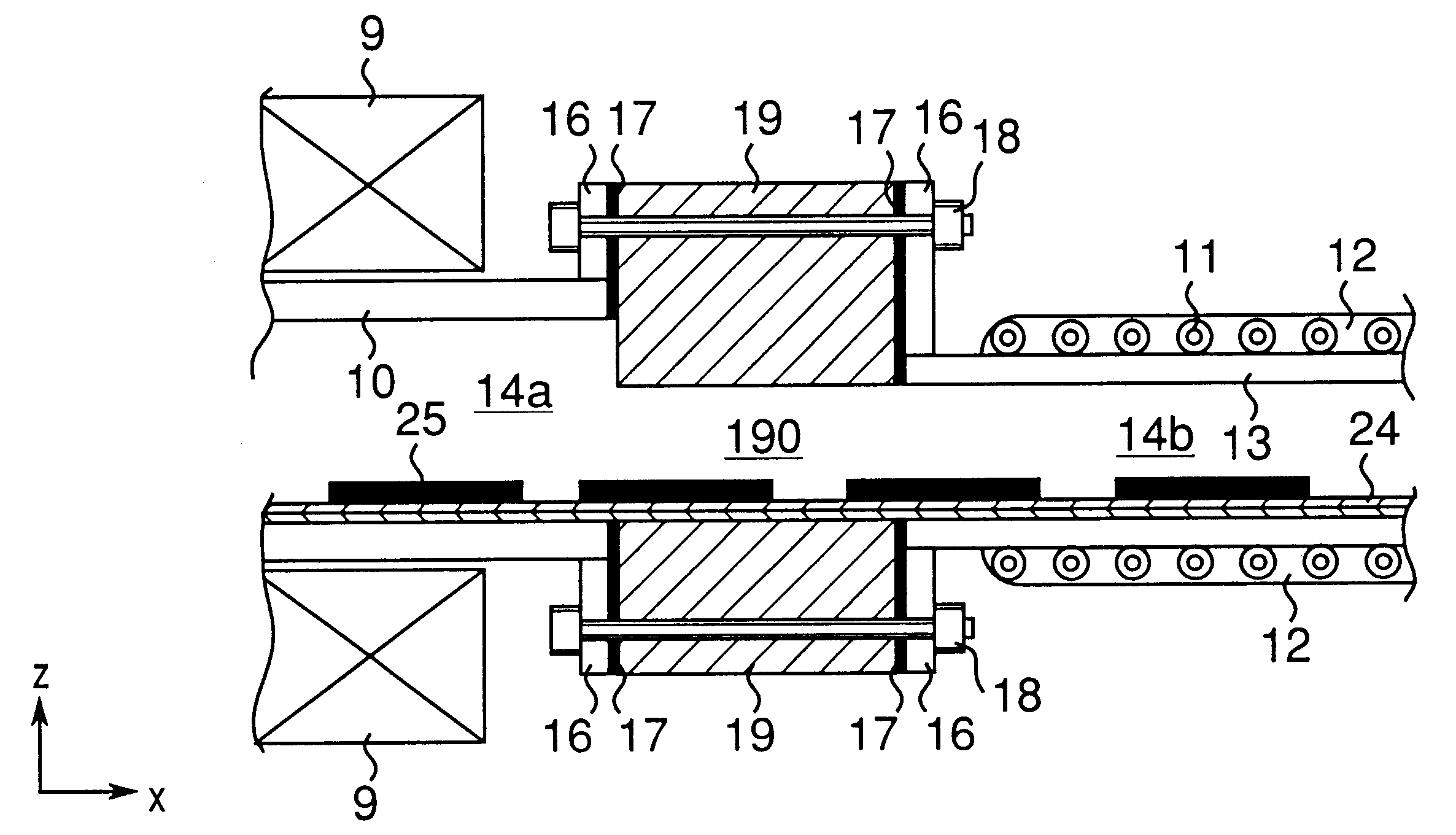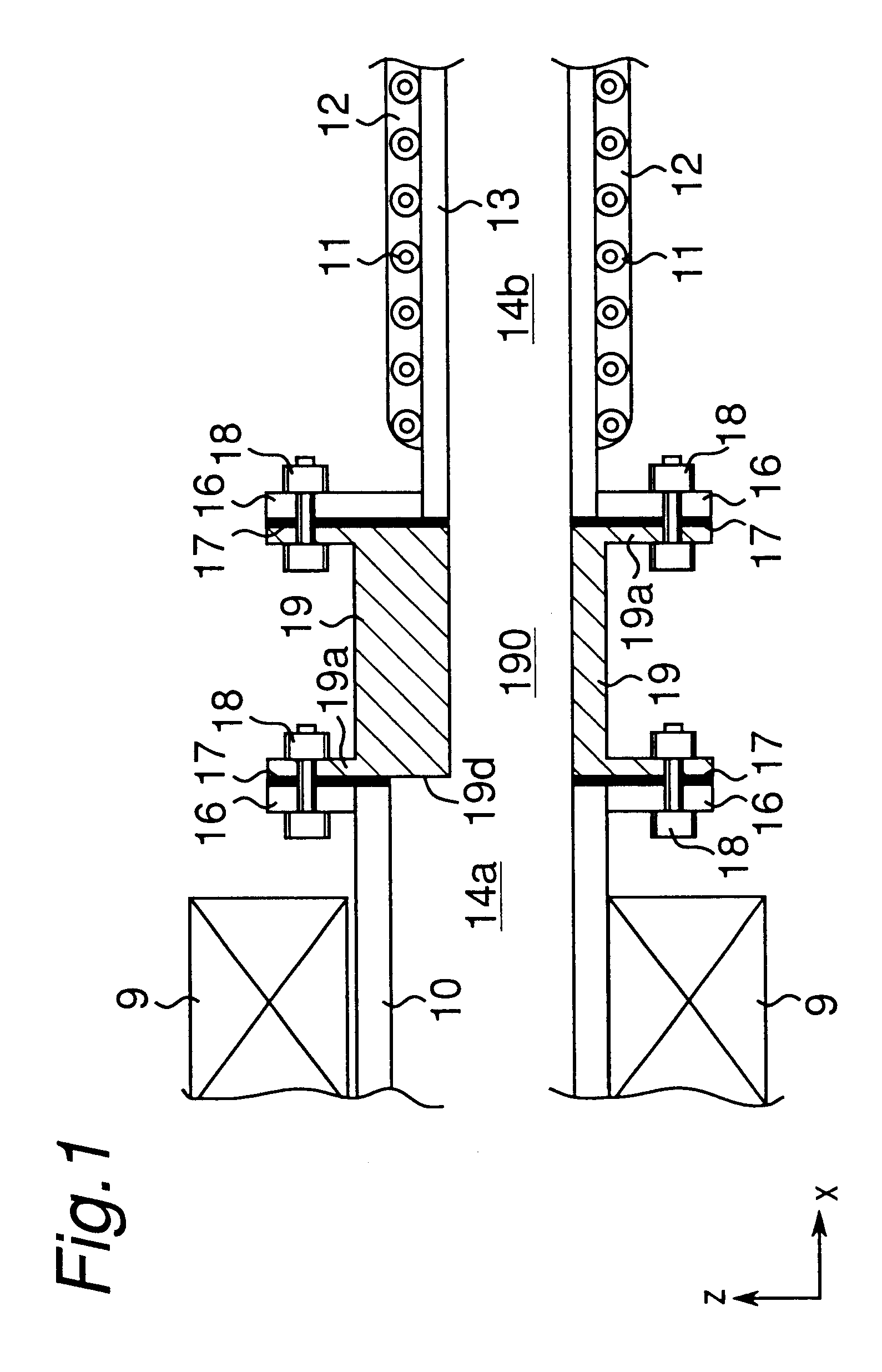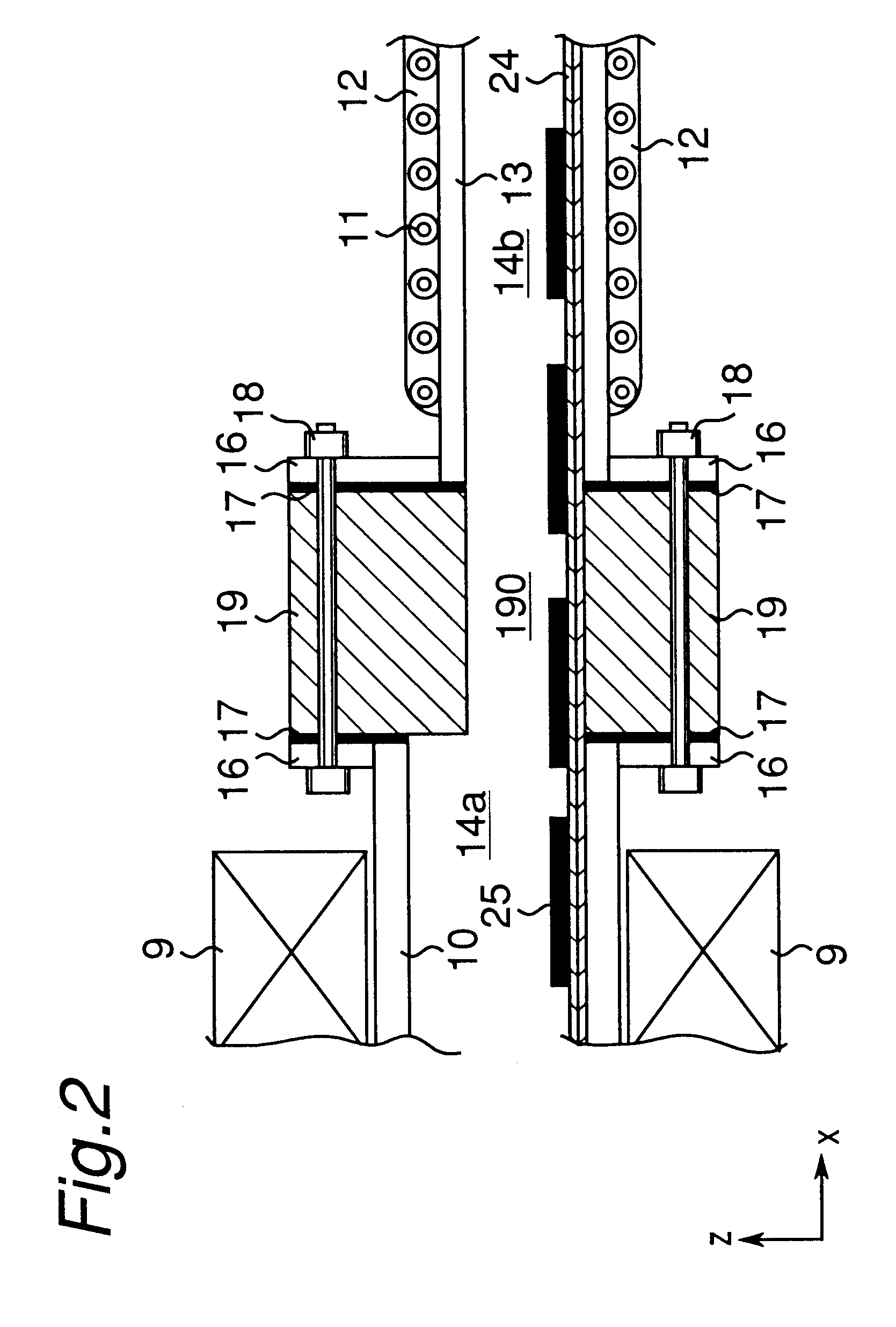Thermal treatment apparatus
a technology of thermal treatment apparatus and thermal treatment apparatus, which is applied in the direction of lighting and heating apparatus, drying machines with progressive movements, furnaces, etc., can solve the problems of increasing the amount of thermal energy that must be supplied to the thermal treatment apparatus, reducing the effective heat efficiency, and reducing the effective heat efficiency. , to achieve the effect of reducing the total thermal energy consumed in the thermal treatment apparatus, reducing the heat loss, and saving operation energy
- Summary
- Abstract
- Description
- Claims
- Application Information
AI Technical Summary
Benefits of technology
Problems solved by technology
Method used
Image
Examples
example 1
A thermal treatment apparatus having one heating muffle and one cooling muffle was constructed. In the thermal treatment apparatus, a thermal insulating structural member formed of a wall made of a material of low thermal conductivity was disposed between the heating muffle and the cooling muffle as shown in FIG. 2.
Materials and sizes of the heating muffle (10), the cooling muffle (13), the mesh belt (24), the object (25) to be treated and the thermal insulating structural member (19) in this Example are as follows.
1) Heating muffle
Material was Inconel 600 of which thermal conductivity at normal temperature was 14.8 W / m.multidot.K;
Wall thickness was 10 mm;
Configuration of muffle was a tubular shape having a semicircular cross section in which an upper wall is arched, with a flange welded to the end face as a joint member;
Width, maximum height and length of muffle were 1000 mm, 250 mm and 7000 mm, respectively; and
Cross section of the thermal treatment zone was a semicircular shape w...
example 2
A thermal treatment apparatus was constructed by providing the thermal insulating structural member formed of a thin plate between the heating muffle and the cooling muffle as shown in FIG. 6. The heating muffle and the cooling muffle of the thermal treatment apparatus of Example 2 are the same as those of Example 1.
In this Example, a stainless steel sheet of 1.0 mm thick was employed as the thin plate. With this thin plate, the thermal insulating structural member (21) was formed into a construction having a hollow of rectangular cross section and a length of 100 mm. A connecting member (22) made of stainless steel plate was used to connect the thermal insulating structural member and the muffle. The thin plate constituting the thermal insulating structural member (21) was fixed to the connecting member (22) by welding.
example 3
Such a thermal treatment apparatus was constructed as the thermal blocking plate member (26) was disposed between the joint member (30) of the heating muffle and the connecting member, (22) of the thermal insulating structural member as shown in FIG. 9 in the thermal treatment apparatus of Example 2. The heating muffle, the cooling muffle and the thermal insulating structural member of the thermal treatment apparatus of Example 3 are the same as those of Example 2. A stainless steel sheet having thickness of 1.0 mm and surface thermal emissivity of 0.01 was used as the thermal blocking plate member (26). In the thermal blocking plate member, an aperture (29) having a height of 25 mm and a width of 980 mm was formed so as to allow the mesh belt (24) and the object to be treated (25) to pass therethrough as shown in FIG. 10A.
PUM
| Property | Measurement | Unit |
|---|---|---|
| temperatures | aaaaa | aaaaa |
| temperature | aaaaa | aaaaa |
| temperatures | aaaaa | aaaaa |
Abstract
Description
Claims
Application Information
 Login to View More
Login to View More - R&D
- Intellectual Property
- Life Sciences
- Materials
- Tech Scout
- Unparalleled Data Quality
- Higher Quality Content
- 60% Fewer Hallucinations
Browse by: Latest US Patents, China's latest patents, Technical Efficacy Thesaurus, Application Domain, Technology Topic, Popular Technical Reports.
© 2025 PatSnap. All rights reserved.Legal|Privacy policy|Modern Slavery Act Transparency Statement|Sitemap|About US| Contact US: help@patsnap.com



